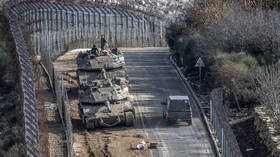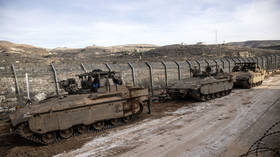The lesson US shale refuses to learn
In 2014, shale drillers were pushed to the brink of oblivion by low oil prices, and today with prices nearing similar levels it seems the sector has not learned its lesson.
It feels like 2014 for the oil industry all over again, except this time, things could get even worse. Most US shale wells have a breakeven well above today’s current oil prices. The result will be that the shale industry in the United States will be hit - and hard. Why is US shale not prepared for this low-price environment?
If someone would have conducted a survey among US shale producers about whether they expected the price of oil to sink below $30 a barrel just five years after the last crash, most of them likely would have said “no way”. But this is today’s ugly reality: West Texas Intermediate dropped to nearly $20 a barrel earlier this week and at the time of writing was trading at a little over $25. Brent crude has sunk to $30 a barrel. And this is really bad news for US shale because it is much lower than the breakeven price for most wells.
What happened?
Also on rt.com Oil price crash: 50% of US shale could go bankruptThe Highest Breakeven in the World
To be fair, US shale producers - and the oilfield service companies working with them - have done a lot to reduce production costs and breakeven prices in the past five years. Shale had, in 2015, the second-highest breakeven price in the world at $68 a barrel, according to Rystad Energy.
Since then, costs have fallen substantially and the breakeven is now $46 per barrel. Sadly, the international benchmarks today are trading much lower than this.
There are several reasons why shale was largely unprepared for the price shock that the Saudi-Russian oil war - which some see as a war against US shale - caused amid the coronavirus outbreak that had already pressured oil prices. One is the very nature of the shale oil industry. Another is its reliance on debt financing. A third reason is the changing attitude of investors, which has affected the industry’s strategy significantly.
The shale oil revolution was hailed as a game-changer, and it was a game-changer. A shale oil well takes a lot less to start returning the investment made in it than many conventional wells: two to four years versus up to seven to 12 for offshore wells. But in this advantage of shale oil lies a disadvantage as well. Fracked wells deplete much more quickly than conventional wells precisely because of the way they produce the oil. Conventional wells tap into oil reservoirs and extract their contents. Shale wells involve fracturing rock that holds oil in its pores and keeping these oil-bearing pores open with sand and chemicals, which makes for faster production and, therefore, faster depletion.
What this means is that shale oil producers need to keep drilling new wells continuously to only maintain production, let alone boost it. Because US shale producers were in growth mode right after the 2014 price crisis began to ease, they drilled more new wells than necessary to just maintain production. Low costs provided by oilfield service companies that were forced to cut their prices to survive during the crisis helped this production expansion.
One problem with any resource extraction project, however, is that production costs never stay the same. They may start low if the resource is abundant and easy to extract or they can fall after the initial phase of extraction thanks to technological improvements, which also happened in the US shale patch. Eventually, however, as the resource begins to deplete, costs invariably rise.
Rising costs generally tend to go hand in hand with lower profits, especially if there are other contributing factors such as falling demand for the commodity, which we have been seeing, too. And then there is the problem of debt.
Because of the way shale oil is extracted, it is a highly capital-intensive activity. Fracking is not free, after all. A lot of this capital has been coming from banks. Banks were happy to lend money to shale drillers while wells were yielding above expectations. Unfortunately, now the tables have turned and many wells are now falling short of yield expectations, shaking banks’ happiness with the shale industry, as the Wall Street Journal reported last year. But there are also debts to be repaid and limited cash, which makes the situation quite difficult for many shale producers.
No wonder then, that there were forecasts for a slowdown in production growth even before the latest global developments. Analysts expected a slowdown from the start of this year before the coronavirus outbreak hit and before Saudi Arabia declared a price war on Russia. As Reuters reported in January, the slowdown would be prompted by continued investor insistence on returns rather than growth.
In the early years of the shale revolution, everyone wanted growth. Investors were willing to wait for their returns with the assumption that oil demand would continue growing uninterrupted. The oil price collapse from 2014 put an end to that illusion and prompted a reshuffling of priorities. Investors in the shale industry now wanted companies to put the breaks on production expansion and start returning cash.
Also on rt.com Russia-Saudi revenge against shale oil threatens to crush entire US financial system, Professor Wolff tells Boom BustYet companies could not return cash if they did not generate enough of it, because prices were way too low for profits. They did try to calm investors when prices rebounded and profitability jumped, but then prices fell again and many shale drillers were forced to start burning cash again. Production expansion as a way to drive up revenues was the only option left when banks were breathing down drillers’ necks for repayments amid stubbornly low prices.
Much of the so-called efficiency gains that the industry touted as the reason for their lower production prices came from the lower prices that oilfield service providers charged and the fact that producers were “running equipment and crews hard to drive drilling costs down by about $20 a barrel,” as Reuters’ Jennifer Hiller put it.
Back in 2017, when oil prices have recovered, starting the second US shale oil boom, Continental Resources’ Harold Hamm warned his fellow producers: "While this period of adjustment is going on, drillers don't want to drill themselves into oblivion. Back up, and be prudent and use some discipline."
Whether by choice or by force of circumstances, most of the industry failed to heed this warning and we are now seeing the first consequences, with analysts predicting bankruptcies and job losses too.
This article was originally published on Oilprice.com














